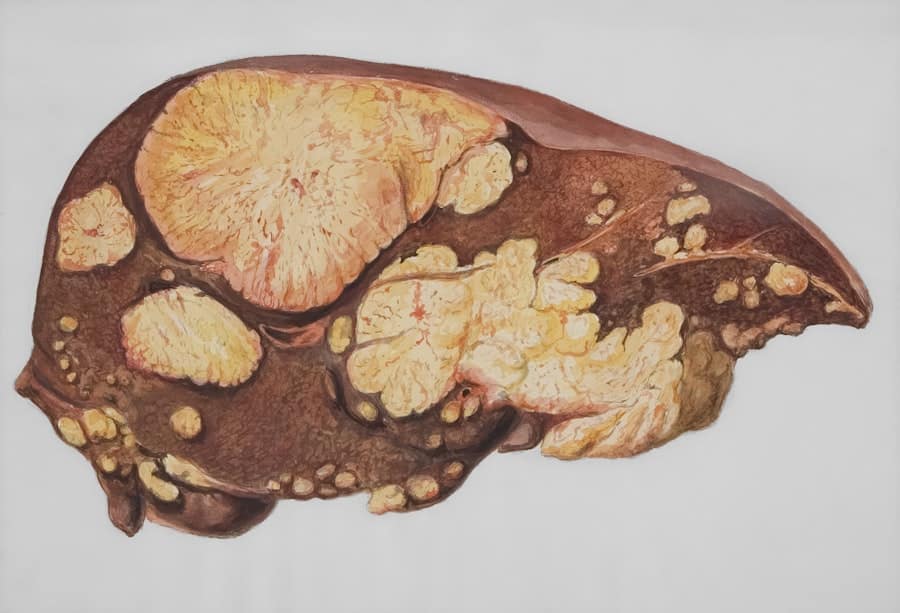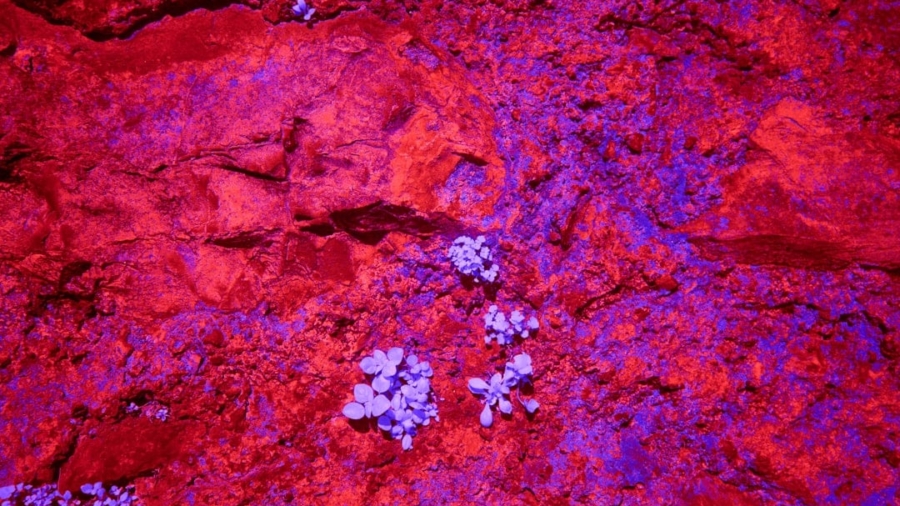The advent of 3D printing technology has ushered in a new era in the field of medicine, particularly in organ transplantation. The promise of 3D-printed organs lies in their potential to address the critical shortage of donor organs, which has long been a pressing issue in healthcare. With thousands of patients on waiting lists for transplants, the ability to create organs tailored to individual patients could revolutionize treatment options.
This technology not only holds the potential to save lives but also to enhance the quality of life for those suffering from organ failure. By utilizing a patient’s own cells, 3D-printed organs could significantly reduce the risk of rejection, a common complication associated with traditional organ transplants. Moreover, the customization aspect of 3D printing allows for the creation of organs that are anatomically and functionally compatible with the recipient.
This personalization can lead to better integration within the body and improved overall outcomes. For instance, researchers have successfully printed structures resembling human tissues, such as heart valves and blood vessels, which can be used in surgical procedures. The implications extend beyond mere survival; they encompass the potential for restoring normal function and enhancing the patient’s overall health.
As this technology continues to evolve, it promises not only to alleviate the burden on transplant waiting lists but also to redefine the very nature of organ transplantation.
Key Takeaways
- 3D-printed organs hold the promise of revolutionizing organ transplants by providing a solution to the shortage of donor organs.
- Advancements in 3D printing technology have enabled the creation of complex and functional organs, bringing hope to patients in need of transplants.
- Ethical and regulatory considerations surrounding 3D-printed organs raise important questions about safety, quality control, and patient consent.
- Challenges and limitations, such as the need for biocompatible materials and long-term viability, still exist in the development of 3D-printed organs.
- The impact of 3D-printed organs on organ donation and transplant waiting lists could potentially reduce the demand for traditional organ donors and decrease wait times for patients.
Advancements in 3D Printing Technology for Organ Transplants
Bioprinting: A Breakthrough in Organ Creation
One of the most notable developments is the use of bioprinting, a specialized form of 3D printing that employs living cells as bio-ink. This technique allows for the layer-by-layer construction of complex tissue structures that mimic the natural architecture of human organs.
Advancements in Materials Science
In addition to bioprinting, innovations in materials science have led to the development of bio-compatible materials that can support cell growth and function. These materials are designed to mimic the extracellular matrix found in natural tissues, providing a conducive environment for cells to thrive. Researchers at institutions like Wake Forest Institute for Regenerative Medicine have made strides in bioprinting functional human tissues, including skin and cartilage, which can be used for grafts and repairs.
Precision Mapping for Seamless Transplantation
Furthermore, advancements in imaging technologies, such as MRI and CT scans, enable precise mapping of a patient’s anatomy, allowing for the creation of highly accurate organ replicas. This precision is crucial for ensuring that 3D-printed organs fit seamlessly into the recipient’s body, minimizing complications during surgery.
Ethical and Regulatory Considerations for 3D-Printed Organs

As with any groundbreaking technology, the rise of 3D-printed organs brings forth a myriad of ethical and regulatory considerations that must be addressed. One primary concern revolves around the implications of creating human tissues and organs in a laboratory setting. Questions arise regarding the moral status of these bioengineered constructs: Are they considered human?
What rights do they possess? These ethical dilemmas necessitate a robust framework to guide research and clinical applications, ensuring that advancements do not outpace ethical considerations. Regulatory bodies also face challenges in establishing guidelines for the approval and use of 3D-printed organs.
The U.S. Food and Drug Administration (FDA) and similar organizations worldwide must navigate uncharted territory as they assess the safety and efficacy of these novel products. Current regulations may not adequately address the unique aspects of bioprinted tissues and organs, leading to potential delays in bringing life-saving technologies to market.
Furthermore, there is a pressing need for transparency in research practices and clinical trials involving 3D-printed organs to foster public trust and ensure that ethical standards are upheld throughout the development process.
Challenges and Limitations of 3D-Printed Organs
Despite the promising advancements in 3D printing technology for organ transplantation, several challenges and limitations remain that hinder widespread implementation. One significant hurdle is the complexity of replicating the intricate structures and functions of human organs. While researchers have made progress in printing simple tissues, creating fully functional organs with vascular networks remains a formidable challenge.
Organs such as the heart or liver require precise architecture and cellular organization to perform their vital functions effectively. Another limitation is the scalability of production. Currently, bioprinting processes are often time-consuming and labor-intensive, making it difficult to produce organs on demand for patients in need.
Additionally, there are concerns regarding the long-term viability of 3D-printed tissues once implanted into a human body. Ensuring that these constructs can integrate with existing biological systems and maintain functionality over time is crucial for their success as transplantable organs. Addressing these challenges will require ongoing research, collaboration among scientists and clinicians, and significant investment in technology development.
The Impact of 3D-Printed Organs on Organ Donation and Transplant Waiting Lists
The introduction of 3D-printed organs has the potential to dramatically alter the landscape of organ donation and transplantation. With an estimated 100,000 individuals awaiting organ transplants in the United States alone, the ability to produce organs on demand could alleviate the chronic shortage faced by transplant centers. By reducing reliance on traditional organ donation systems, which often involve lengthy waiting periods and ethical dilemmas surrounding donor consent, 3D printing could provide a more efficient solution to meet patient needs.
Furthermore, personalized 3D-printed organs could lead to improved outcomes for patients who might otherwise face complications from donor organ mismatches. The reduction in transplant rejection rates associated with using a patient’s own cells could enhance recovery times and overall success rates. As a result, healthcare systems may see decreased costs associated with post-transplant care and complications, ultimately benefiting both patients and providers alike.
The prospect of having an organ tailored specifically for an individual could transform not only medical practice but also societal perceptions surrounding organ donation.
The Future of Personalized Medicine with 3D-Printed Organs

The integration of 3D printing technology into personalized medicine represents a paradigm shift in how healthcare is delivered. As researchers continue to refine bioprinting techniques, the future holds exciting possibilities for creating bespoke organs tailored to individual patients’ needs. This approach aligns with the broader trend toward personalized medicine, which emphasizes treatments customized based on genetic, environmental, and lifestyle factors unique to each patient.
In this future landscape, patients may undergo comprehensive assessments that inform not only their treatment plans but also the design of their 3D-printed organs. For instance, individuals with specific genetic predispositions may benefit from organs engineered to mitigate risks associated with their conditions. This level of customization could lead to more effective treatments and improved patient outcomes across various medical disciplines.
As technology advances, we may witness a shift from reactive healthcare—where treatments are administered after disease onset—to proactive strategies that focus on prevention and personalized interventions.
Cost and Accessibility of 3D-Printed Organs
While the potential benefits of 3D-printed organs are substantial, questions surrounding cost and accessibility remain critical considerations as this technology develops. The initial investment required for advanced bioprinting equipment and materials can be prohibitively high for many healthcare facilities, particularly those in underserved areas. As a result, there is a risk that access to these innovative treatments may be limited to affluent patients or institutions with substantial resources.
Moreover, ongoing research is needed to determine the cost-effectiveness of producing 3D-printed organs compared to traditional transplantation methods.
Policymakers and healthcare leaders will need to collaborate to develop frameworks that ensure equitable access to these life-saving technologies while also addressing financial sustainability within healthcare systems.
The Role of Collaboration in Advancing 3D-Printed Organs in Transplant Medicine
The advancement of 3D-printed organs in transplant medicine hinges on collaboration across multiple disciplines, including engineering, biology, medicine, and ethics.
For instance, engineers specializing in materials science can work alongside biologists to develop bio-compatible materials that support cell growth while ensuring structural integrity.
Furthermore, collaboration between academic institutions, industry leaders, and regulatory bodies is crucial for fostering innovation while maintaining safety standards. By sharing knowledge and resources, stakeholders can accelerate research efforts aimed at overcoming existing limitations in organ printing technology. Additionally, engaging with patient advocacy groups can provide valuable insights into patient needs and preferences, ensuring that developments align with real-world applications.
As we move forward into an era where 3D-printed organs become increasingly viable options for transplantation, fostering collaboration will be key to unlocking their full potential. By working together across disciplines and sectors, we can navigate ethical considerations, streamline regulatory processes, and ultimately bring life-saving technologies to those who need them most.
In a recent article discussing the future of 3D-printed organs in transplant medicine, it is fascinating to consider the advancements in technology that are shaping the medical field. This innovation is reminiscent of the groundbreaking developments in logo design software, as highlighted in this article. Just as smartwatches are enhancing connectivity in our daily lives, the potential for 3D-printed organs to revolutionize healthcare is truly remarkable. Additionally, the Samsung Galaxy Chromebook 4 opens up a new world of possibilities with its cutting-edge features, much like the potential impact of 3D-printed organs on transplant medicine, as discussed in this article.
FAQs
What is 3D-printed organs in transplant medicine?
3D-printed organs in transplant medicine refer to the use of 3D printing technology to create artificial organs that can be used for transplantation. This technology has the potential to address the shortage of donor organs and improve the success rates of organ transplants.
How does 3D printing technology work in creating organs?
3D printing technology works by creating a three-dimensional object layer by layer, based on a digital model. In the case of 3D-printed organs, bioinks containing living cells are used as the “ink” to build the organ structure. This allows for the creation of complex organ shapes and structures.
What are the potential benefits of 3D-printed organs in transplant medicine?
The potential benefits of 3D-printed organs in transplant medicine include the ability to create organs tailored to the specific needs of individual patients, reduced risk of organ rejection, and the potential to eliminate the need for donor organs, addressing the shortage of available organs for transplantation.
What are the current challenges and limitations of 3D-printed organs in transplant medicine?
Some of the current challenges and limitations of 3D-printed organs in transplant medicine include the need to improve the vascularization of 3D-printed organs to ensure proper blood supply, the long-term viability of 3D-printed organs, and the regulatory and ethical considerations surrounding the use of 3D-printed organs in transplantation.
What is the future outlook for 3D-printed organs in transplant medicine?
The future outlook for 3D-printed organs in transplant medicine is promising, with ongoing research and development focused on addressing the current challenges and limitations. As the technology continues to advance, it has the potential to revolutionize the field of organ transplantation and improve outcomes for patients in need of organ transplants.

